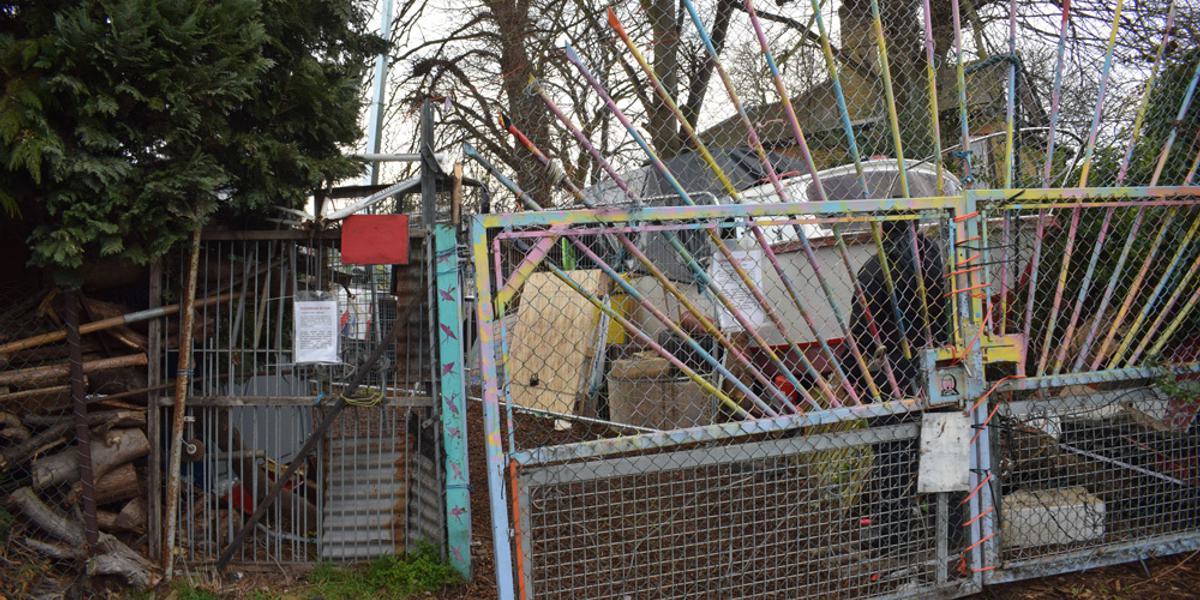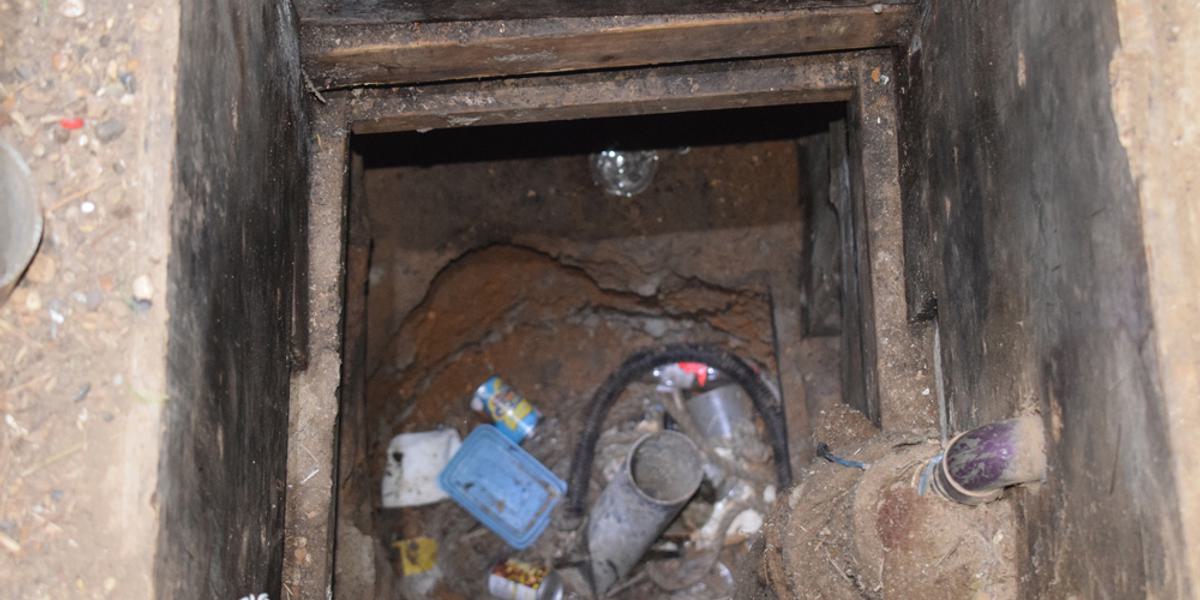Grow Heathrow “Great Escape” tunnel cleared by the National Eviction Team

On Tuesday 26th February 2019, the National Eviction Team and The Sheriffs Office undertook the removal of occupiers from the Grow Heathrow site at Sipson Village. The protesters had been expecting us the week before and had issued a call for support online and on social media.
The eviction was undertaken under a High Court writ of possession, which was issued to The Sheriffs Office, an authorised High Court enforcement company. The National Eviction Team works very closely with The Sheriffs Office and supports them on specialised evictions, such as this.
Site entry
Timing was crucial for the commencement of the eviction: our entry team went in first, followed swiftly by the main team. A police helicopter was monitoring the position due to the proximity of the site to Heathrow Airport.
There were nine protesters on the site covered by the writ, and approximately 30 more on an adjacent plot of land to the rear.
Protesters at height
As soon as we gained entry, two protesters climbed up the tower they had constructed out of scaffolding tubes. There were several lock-ons on the tower and one protester locked-on.
Whilst our climbers were going up the tower, the protesters started throwing stones and urinating on the enforcement agents at ground level. Once our specialist climbing team reached the protesters, they removed the protester from the lock-on and the other agreed to climb down with no resistance.
We also found several lock-ons at ground level, along with two more on top of a corrugated roof. They ranged from simple lock-ons to two that were substantial. We made them all safe and unusable.
The National Eviction Team secured the perimeter site quickly with fencing to mark out the boundary between the writ site and the adjacent land.
Ship ahoy!
On site we found a container with two people asleep inside (they were removed from site), a shed in one of the greenhouses and two landlocked boats, an 8-ton 25-foot yacht and a Thames Cruiser owned by and put on site by the protesters. Since the completion of the eviction, we are working with the owner to arrange for a crane to remove the boats.
Going underground
The shed we had discovered in one of the greenhouses had a wooden floor with a metal square in it with a handle. We lifted the metal panel and found a tunnel head/entrance.
We shone a torch down, revealing a considerable drop into the shaft. At this point we mobilised the National Eviction Team specialist tunnelling team, who are fully qualified and experienced in protester extraction from confined spaces.
Whilst waiting for their arrival, the head of the tunnel was manned to stop anyone else from entering. The team’s first task was to examine the tunnel to remove any underground protesters and/or confirm that it was empty before closing it.
About five hours after finding the head of the tunnel, we heard noise coming from inside the tunnel and a male protester in his 50s appeared at the bottom of the shaft. He said there were five of them down there and that they had food and water for 14 days. Simultaneously, a similar statement was made to the waiting press by the other protesters. He also said there were two concrete chambers at either end of the tunnels with lock-ons.
The protester told us that he was the conduit to communicate with the others in the tunnel, but was concerned that the batteries they were using to circulate the air and light the tunnels were about to run flat.
We negotiated with him to allow him to connect a power supply to these items from their solar panels above ground if he gave himself up and came out of the ground voluntarily. He agreed.
Whilst we were not convinced that there were more people in the tunnel, we had to assume that he was telling the truth and physically check the entire length of the tunnels to find the true picture.
What the tunnelling team found
Our specialist tunnelling team went into the 3.5 metre-deep shaft, where we discovered two tunnel heads, one heading north and the other south. We initially entered the north tunnel, as we thought there was a possibility that this could extend into the neighbouring land, but were relieved to discover that, after a 2 metre strait, it curved into a 2.5 metre long fish hook and then a dead end.
After confirming and videoing the end of that tunnel, we closed it off and focused on the south side tunnel. This proved to be a lot more complex, having two chambers, a mattress, food and human waste containers. The tunnel then curved to the right before splitting into two.
By 17:30 on Friday 1st March, the team had dug out and shored approximately 22 metres of tunnel and, to our relief, had not found any additional protesters within. The whole process was videoed and we confirmed the tunnel as being empty at which point we backfilled to render it unusable.
This was the most extensive tunnel we have come across for a number of years.
The protesters’ possessions and ongoing security
We took a written and video inventory of all items that remained on site, as we were tasked with managing the return of personal possessions under a 14-day tort notice. This effectively allows the protesters to collect any items they wish within that time frame.
As part of this process, the security put in place also prevents the protesters from regaining unauthorised access to the site.
If you would like us to assist you with protesters, squatters or travellers, please contact the National Eviction Team.
















